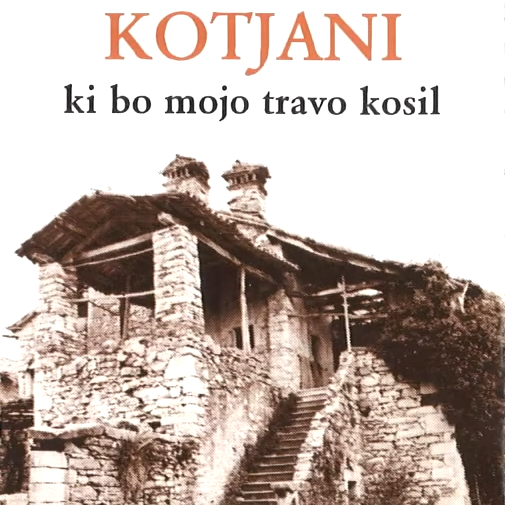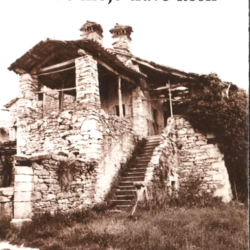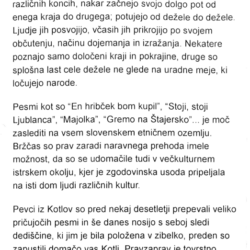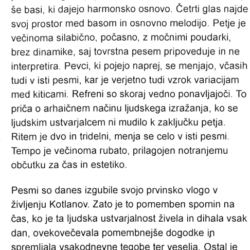Kotjani: Who Will Cut My Grass

Song is a reflection of life, ingrained into the human soul. It speaks of place, environment, and time. We produce songs constantly, while time and the environment give songs a unique character. Folk songs emerge in many different ends of a geographic space, from which they begin their long journey from one region to another, traveling from one country to the next. People make them their own, people adopt them, sometimes tailoring them to their own feelings, ways of perception and expression. Some folk songs are known only in certain places and regions, others are the common property of an entire country regardless of the official borders that separate nations.
Note: Songs A1-11 correspond to songs 1-11, and songs B1-8 to songs 12-19.
Songs such as “En hribček bom kupil”, “Stoji, stoji Ljubljanca”, “Majolka”, “Gremo na Štajersko”… can be found throughout the Slovenian ethnic territory. It is probably due to the natural progression of folk songs that they also became part of the repertoire of the multicultural Istrian environment, where the fate of history brought people of different cultures to the same home.
Singers from Kotli sang many of the songs presented here a few decades ago and still carry with them traces of the heritage laid in their cradle before they left their native village. In fact, this type of singing is a search for the memory, melodies and stories that songs contain. Kotli folk singers sing boys’ songs, mostly love songs and also drinking songs.
They sing folk songs in a true folk spirit, singing loudly so that the music rings out, and a fourth voice sometimes joins the three-part singing. Each song is sung first by a single singer, who also sets the intonation, then another joins in, singing a third higher, and finally the basses, which provide the harmonic basis. The fourth voice finds its place between the bass and the basic melody. The singing is mostly syllabic, slow, with strong accents, and without dynamics, since this type of song tells a story and does not interpret. The singers switch roles while singing, sometimes even within the same song, which is probably also the reason for the variations between the stanzas. The choruses are almost always repetitive, which testifies to an archaic way of folk expression when folk artists were in no hurry to finish a song. The rhythm is in two and three parts, and it changes even within the same song. The tempo is mostly rubato, adapted to the inner sense of time and aesthetics.
Today, songs have lost their primary role in the lives of inhabitants of Kotli. Therefore, these recordings are an important memory of a time when folk creativity lived and breathed every day, immortalizing important events and accompanying everyday hardships and joys. It remains a document from the former life of a friendly Istrian village.
Maša Komavec
Institute of Ethnomusicology
Scientific Research Center of the Slovenian Academy of Sciences and Arts




